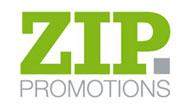This website uses cookies to improve your browsing experience. By continuing to browse, you are agreeing to our use of cookies as explained in our Cookie Policy.
Login / Registration
Product Categories
Branding Options
Artwork Guidelines
When submitting artwork for your merchandise orders we can accept it
in almost any type of electronic file, Mac or PC. Please feel free to
email our studio with
any questions that you would like us to answer or files that you would
like us to check over for suitability.
Please forward your artwork as early as possible so that we can advise
you on the best way that you logo can be presented on your chosen promotional
item.
When you contact us one of our trained staff will be able to advise you
on the best method that can be used to print your logo and message. They
will advise one of the following technologies that are available to us:
Screen Print
A screen print is the application of a single colour at a time through
a custom made 'template' or 'stencil' onto a flat or curved surface.
A second or more pass would need to be made to apply additional colours
from the design. Screen print costs vary depending upon whether or not
an automated machine process is possible, semi automated process is employed
or traditional manual technique used. Screen printing is great for most
three dimensional objects made from plastics, wood, metal, textiles,
glass and ceramics.
Tampo or Pad Print
The most effective way of applying up to 4 colour process onto flat,
curved or recessed areas. Ink is applied from an etched plate via a rubberised
pad. This in turn applies ink under correct pressure lifted from the
plate. Tampo or pad printing is great for just about every desk top item.
Anything made from firm, hard or semi soft materials can be printed whether
they are flat or curved, recessed or indented.
Acid Etching
Similar to screen printing but instead of using coloured ink an abrasive
acid chemical is applied though the template instead. This chemical erodes
and affects the products surface leaving a contrasting area. Acid etching
is great for glass, metal, wood and ceramics providing an 'embossed'
look.
Engraving
Applied with a powerful laser or via a diamond tipped tool, engraving
will literally burn or scratch into your chosen product leaving a mark
that will outlive any other print or branding technology in normal general
use. Laser engraving is great for chrome or stainless steel, glass, crystal
and wooden objects.
Litho Process Printing
Litho process printing can be used to give your design greater depth
through the use of tints, tones and gradients. A litho process can use
as many spot colours as you like.
Litho process is great for paper and cardboard items, poly, textiles,
larger flatter surfaces made from PVC and plastics.
4 Colour Process Printing
Cyan, magenta, yellow and black ink is used to produce a final finish
as good as a photograph. 4 Colour process printing is great for paper,
cardboard, textiles and other flat surfaces including PVC and plastics
technologies.
Transfer Printing
Transfers are printed up to 4 colour process onto a flat, vinyl material.
It is then applied to your chosen item via chemical adhesion and heat
application. Transfer printing is great for ceramics, glass, textiles,
PVC and plastics. UK made stress item bags.
Digital Print
Allows files to be printed direct from the computer onto material removing
the need for plates or film. Digital printing is great for paper, plastics
and textiles providing short runs and a quick turn around.
Hot Foil Blocking
Application of coloured foil onto leather or PVC, in particular diaries
and desk sets.
Hot foil blocking is great for leather diary products.
Embroidery
A way of stitching your design into garments, bags, vinyl and other thin
materials. Clarity will never be as crisp as print onto for example plastics,
but outlasts, and outperforms print onto garments and just seems the
right thing to do onto clothing.
Embroidery is great for clothing, textiles, thin PVC and other flat,
thin or soft surfaces.
Woven
Custom set loom to create a garment or bag from scratch to your specific
design. A polo shirt with two different coloured arms, club tie and ladies
scarf set, towel or custom made neck ladel are but a few examples. Great
for textiles and woven neck labels.
Labelling
Application of label to finished product. 4 Colour process and litho
process' employed to print labels to specific size on materials such
as paper, vinyl and plastics.
Great for application of 4 Colour process design to product that would
not ordinarily be able to have print process applied to it.

.jpg)